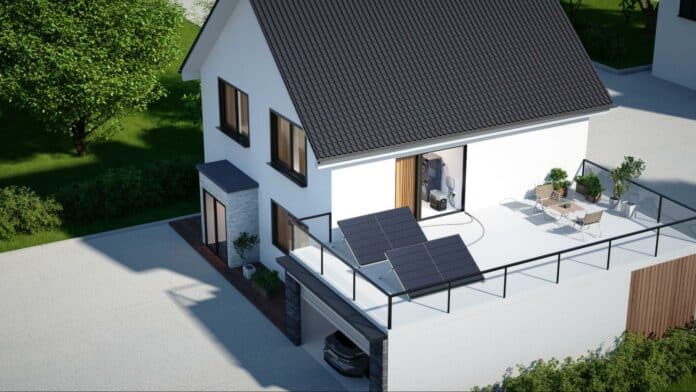Table of Contents
With Eskom’s load shedding, including record-breaking 332 days of rolling blackouts in 2023, more South Africans are switching to solar. Recent cost decreases, tax credits for businesses, and net metering in the Cape Town area, which allow you to sell excess electricity to the grid, make it even more appealing.
No worries if you don’t have those incentives; an off-grid system will pay for itself in five years, and then your energy is completely free!
When you purchase solar panels, you must know which direction and angle to install them. Let’s take a look!
What Angle Should Solar Panels Be in South Africa?
Now that solar energy is becoming so popular with all the inconveniences of load-shedding and the recent decreases in solar costs, it’s a great time to invest.
When you get your solar panels, called photovoltaics, it’s essential to determine the best angle for installation. In South Africa, they are best oriented towards the true North, where the sun shines. True North is different from magnetic North, which a compass determines. The difference between the two is the magnetic declination.
When you mount your PVs, you want to ensure they get peak sunlight where photovoltaics work at their maximum efficiency. Peak sunlight is when the sun’s intensity is the greatest, typically between midday and early afternoon.
How Do You Calculate the Best Angle for Solar Panels?
Your geographical location determines the best angle for your photovoltaics. In South Africa, they should face the true North at an angle from horizontal approximately equal to your latitude. Since South Africa is between 21°S and 34°S, your panels are best placed at an angle equal to or slightly greater than that. Slightly greater, but no more than 15° more, is ideal to account for the winter when the sun is lower in the sky.
3 Factors Influencing Solar Panel Orientation
Geographical Location
Geographical location determines which direction your solar panels should face to maximise your output. In the southern hemisphere, the true North is usually best.
Your home’s geographical latitude determines the best angle for your solar panels. South Africa lies between about 21°S and 34°S. You can optimise your panels’ efficiency by positioning them at an angle equal to or slightly greater than your latitude.
For example, if you look up your latitude and it’s 29°S, install them at 29° from horizontal.
However, using that will make them less effective in the winter when the sun is lower on the horizon. Therefore, it’s best to orient them at an angle slightly more than your latitude but no more than 15° more. For instance, at 29°S, you might want your photovoltaics at 35-40° to optimise solar energy output all year. Alternatively, if you have adjustable mounting systems, you can change them seasonally to maximise production.
Climate Variations
For those in hotter regions with fewer clouds, ensuring a gap between the PVs and the roof surface—150mm or more is ideal. This gap allows the heat to dissipate since temperatures over 25°C start to reduce energy output.
Conversely, for those closer to the coast who might get more clouds, it’s helpful to tilt your panels away from the equator slightly so that they can collect more energy when the sky is overcast.
Roof Design
If you install rigid solar panels that are roof-mounted, your roof will impact your array’s performance.
Those on a steep angle may not be able to achieve the optimum orientation angle for your location. Likewise, those at a shallow angle may produce less electricity. If your roof is in the shade for parts of the day, especially during peak sunlight hours, this will seriously impact production, and you may need unique mounting systems.
Since the sun rises in the East and sets in the West, this means in the mornings, you have more sunlight from the East, and in the afternoon, you have more from the West. When looking at your roof, this is something else to consider. You can also factor in what time of day you’re home and using the most energy.
If your roof is not ideal for these, consider ground-mounted panels. Alternatively, if you use portable panels, you can manually move them wherever needed to optimise your output.
Frequently Asked Questions
North-facing roofs are best for solar panel installation in South Africa because this is where they will get the most direct sunlight throughout the day since they will face towards the equator, where the sun is overhead. North-east-facing roofs will also be suitable in the winter to get direct sunlight when the days are shorter.
Final Thoughts
If you want to be independent of your struggling power company’s rolling blackouts, investing in EcoFlow’s Solar Panels is a fantastic idea. Before you install them, however, you should figure out which direction is true North on your property and look up your latitude to help you determine the best angle to mount your photovoltaics. Together, that will help you achieve your maximum energy output efficiency.
